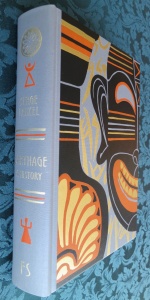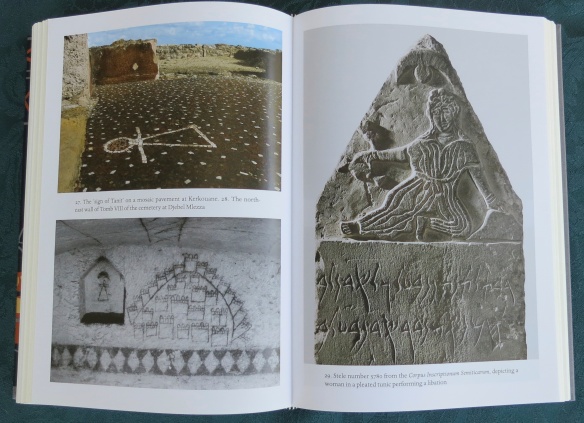 We are currently basking in an Indian summer, so it is quite appropriate that Jackie is so proud of her Star of India clematis that, at a cost of £1.99 she rescued from Morrison’s shelves. Baby Bio, regular watering, and plentiful sunshine have done the trick.
We are currently basking in an Indian summer, so it is quite appropriate that Jackie is so proud of her Star of India clematis that, at a cost of £1.99 she rescued from Morrison’s shelves. Baby Bio, regular watering, and plentiful sunshine have done the trick.
Late this morning, I walked down to the village shop and back, for New Forest ice cream. In tubs for the freezer, of course. I wouldn’t have got very far with cones, in a temperature in the high twenties.
Blackberries in various stages of ripening now festoon the late summer hedgerows grasped by their thorny stems.  We’ll probably have to pick some sometime.
We’ll probably have to pick some sometime.
Against the background thrum of the ride-on lawn mower shaving the grass of a house labelled Yew Tree, those not to be ridden-on taking care of the frontage of Bay Tree Cottage opposite, were positively silent as they cropped away.
 This afternoon I finished reading Serge Lancel’s tome, ‘Carthage: A History’. The writer himself, I understand, simply called the book ‘Carthage’. To my mind it really represents a search for the great pre-Christian African city state. An endeavour to find the meeting points between archaelogical research and the classic authors’ annals. The difficulties beset by the historian working with early texts and largely vanished remains are as painstakingly confronted by Lancel, as if he himself were digging in the sand.
This afternoon I finished reading Serge Lancel’s tome, ‘Carthage: A History’. The writer himself, I understand, simply called the book ‘Carthage’. To my mind it really represents a search for the great pre-Christian African city state. An endeavour to find the meeting points between archaelogical research and the classic authors’ annals. The difficulties beset by the historian working with early texts and largely vanished remains are as painstakingly confronted by Lancel, as if he himself were digging in the sand.
Carthage was completely destroyed by the Romans in 146 BC. The victors used the stones of the original city to build their new one. There wasn’t much left for the early archaeologists, who, in a less carefully regulated age, plundered the tombs. There was even less for the modern ones. Nevertheless the story is slowly being pieced together.
Although the book’s later writing demonstrates that Lancel, no doubt assisted by Antonia Nevill’s translation from the French, can write elegant prose, I found the bulk of the earlier chapters somewhat difficult to absorb. I am never entranced by figures and careful measurements which were used to explain conclusions. There were lots of these. The author is also committed to examining in detail other possible alternatives. I struggle not to skip these sections.
 My Folio Society edition contains many detailed drawings and informative photographs. These aided my understanding of what is known about a place that was just a name to me before reading this work.
My Folio Society edition contains many detailed drawings and informative photographs. These aided my understanding of what is known about a place that was just a name to me before reading this work.
 Elizabeth came to visit and share our evening meal. Jackie placed the bottle of La Patrie Cahors 2011 malbec in the sunshine. After a very short time the bottle became very hot with the wine erupting through the cork. A lengthy period in the fridge was then required. Readers who feel inclined to read ‘The Village Shop Revisited’ of 20th October last year, will discover that I am quite practiced in this method of acquiring the correct temperature.
Elizabeth came to visit and share our evening meal. Jackie placed the bottle of La Patrie Cahors 2011 malbec in the sunshine. After a very short time the bottle became very hot with the wine erupting through the cork. A lengthy period in the fridge was then required. Readers who feel inclined to read ‘The Village Shop Revisited’ of 20th October last year, will discover that I am quite practiced in this method of acquiring the correct temperature.
Whilst we enjoyed Jackie’s wonderful beef stew, with a smattering of carrots, we got talking about a trip to The Hampshire Bowman. This was because they served feather blade steak, which is often used for beef stew. None of us could remember what we had eaten on our visit there. The solution was simple. Across the room on my Apple, was all the information required. Should you be interested, you can do what we did, which is look up the Renovations post. The malbec was the drink for Elizabeth and me, whilst Jackie’s was Blue Moon. Dessert was the New Forest Dairy Oriental Ginger ice cream I had bought this morning.
